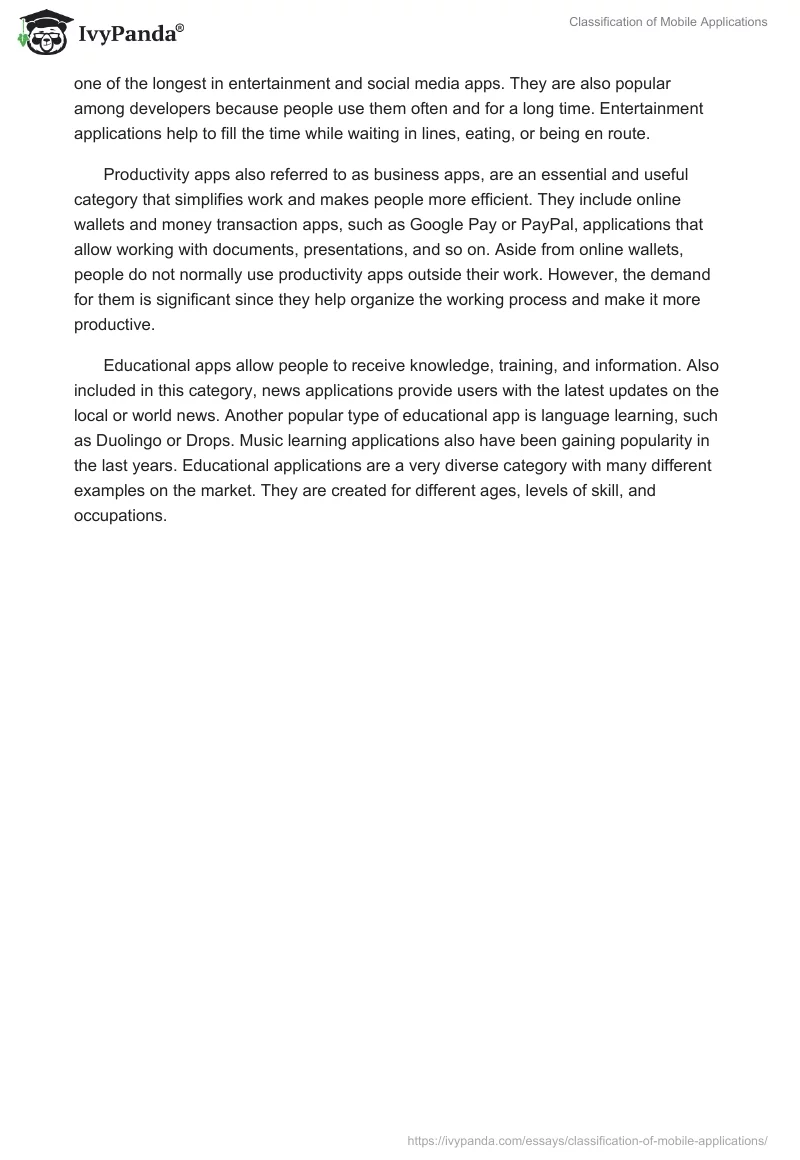Mobile applications, more commonly referred to as mobile apps or simply apps, are a type of computer program created for mobile phones. Originally, they were invented to simplify the use of a calendar, calculator, email, and some other tools. However, at present, they are used in several different spheres. Depending on the purpose of use, mobile apps can be divided into six categories: utility, lifestyle, social media, entertainment, productivity, and educational.
Utility apps are the kind of applications that people need daily. Such apps may include a calendar, notes, QR-scanner, and others. Utility apps have the shortest user session times out of all the types. However, they are essential for the user to go on with their daily lives without complications. For example, when people need to write something down, they do not have to look for a notebook and a pen as people did in the past but open an application on their phone. Utility apps are convenient, save users’ time and increase productivity.
Lifestyle apps include all types of applications that help users support or change their lifestyles. Examples are travel apps, such as Skyscanner and Airbnb; dating, such as Tinder; food apps; fitness, and so on. The popularity of lifestyle apps has been increasing in the last few years. Due to societal changes that occurred in the last century, modern people are more concerned with the search for their identity, and lifestyle applications are what assist them in this search.
Social media application is one of the most popular types. Those applications allow users to build their social networks and communicate with them by sending or posting messages, photos, videos, and other content. Facebook, Instagram, Twitter, Telegram, and Pinterest are all social media apps. Nowadays, such apps are not only a way to communicate with friends but also to promote business. Companies of all kinds have social media accounts to communicate with their clients and advertise products. In other words, social media applications have become an essential part of people’s lives.
Entertainment applications are also quite popular among users from all parts of the world. They include games, such as Angry Birds or Doodle Jump; streaming services, such as Netflix; and online libraries, such as Amazon Kindle. The user session time is one of the longest in entertainment and social media apps. They are also popular among developers because people use them often and for a long time. Entertainment applications help to fill the time while waiting in lines, eating, or being en route.
Productivity apps also referred to as business apps, are an essential and useful category that simplifies work and makes people more efficient. They include online wallets and money transaction apps, such as Google Pay or PayPal, applications that allow working with documents, presentations, and so on. Aside from online wallets, people do not normally use productivity apps outside their work. However, the demand for them is significant since they help organize the working process and make it more productive.
Educational apps allow people to receive knowledge, training, and information. Also included in this category, news applications provide users with the latest updates on the local or world news. Another popular type of educational app is language learning, such as Duolingo or Drops. Music learning applications also have been gaining popularity in the last years. Educational applications are a very diverse category with many different examples on the market. They are created for different ages, levels of skill, and occupations.


